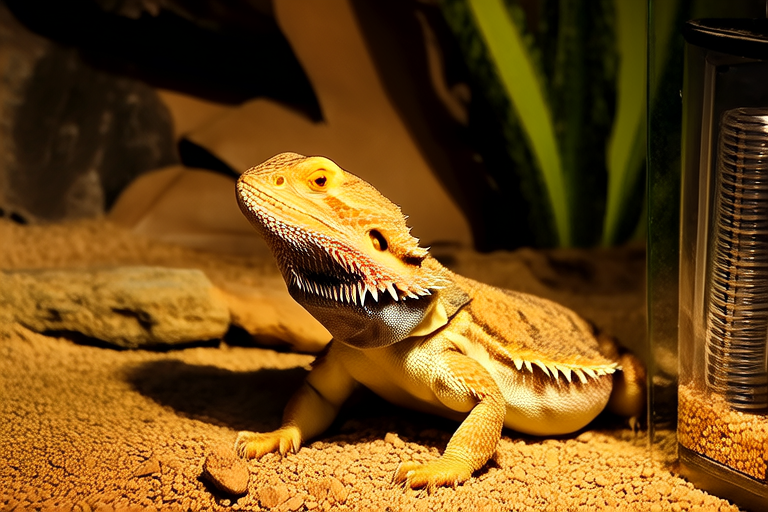The Ultimate Guide to Keeping Your Bearded Dragon Happy and Healthy
Bearded dragons are popular pets due to their friendly nature, relatively low maintenance, and fascinating behavior. To ensure your bearded dragon lives a long, happy, and healthy life, it’s crucial to provide proper care in terms of diet, hydration, habitat setup, temperature and lighting, exercise, grooming, and monitoring for common health issues.
Proper Diet
Feeding your bearded dragon the right diet is essential for its growth, health, and happiness. Their diet consists mainly of insects and vegetables, with a mix of both being ideal. Juvenile bearded dragons require more protein from insects, while adults need more plant-based foods. Suitable insects include crickets, dubia roaches, and waxworms. Always gut-load insects before feeding them to your dragon to enhance nutritional value. Vegetables like collard greens, mustard greens, and squash are excellent choices. Fruits can be given occasionally but should not form a significant part of their diet.
Hydration
Bearded dragons obtain most of their water from the food they eat, especially leafy greens. However, it’s important to offer fresh water daily. Provide a shallow dish that allows them to drink without risk of drowning. Mist their enclosure or place a humid hide box to help maintain humidity levels, which aids in shedding and overall health.
Habitat Setup
Your bearded dragon’s habitat should mimic its natural environment as closely as possible. A glass tank of at least 40 gallons is suitable for one adult dragon. The enclosure must have a secure lid to prevent escape. Add branches, rocks, and hides for climbing, basking, and hiding. Use a substrate that is safe and easy to clean, such as reptile carpet or paper towels for juveniles, and calcium sand or coconut fiber for adults. Avoid substrates like gravel, walnut shells, and corn cob, which can cause impaction if ingested.
Temperature and Lighting Requirements
Temperature regulation is critical for your bearded dragon’s metabolism and digestion. Maintain a temperature gradient within the enclosure, ranging from 75-85°F (24-29°C) on the cooler side to 95-110°F (35-43°C) on the warmer side. Use a high-quality thermostat to monitor temperatures accurately. A basking spot should reach 95-110°F (35-43°C). Install UVB lighting, specifically designed for reptiles, to provide essential vitamin D3 for calcium absorption. Lights should be on for 10-12 hours daily and turned off at night to simulate day and night cycles.
Exercise Needs
Bearded dragons are naturally active and benefit from regular exercise. Encourage movement by providing a spacious habitat with climbing structures. Allow supervised time outside the enclosure under direct sunlight or UVB light for additional exercise and vitamin D3 synthesis. Handling your dragon gently and frequently also promotes bonding and physical activity.
